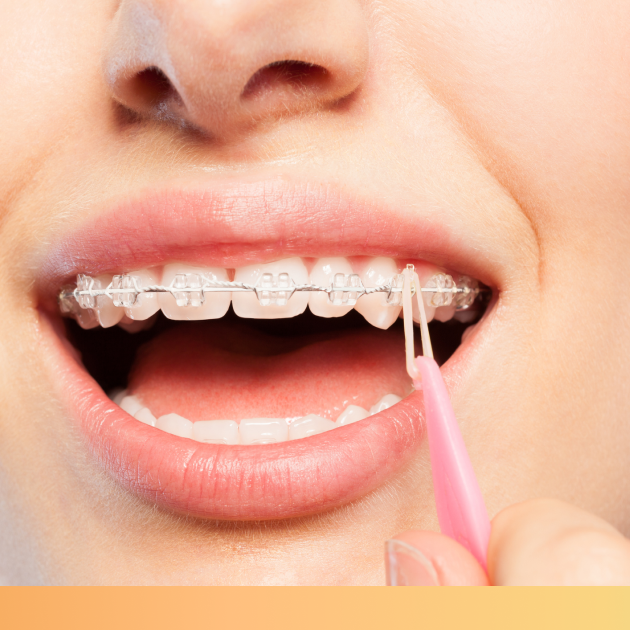Buck teeth (Overjet)
Addressing overjet and other types of malocclusion is crucial for both oral health and aesthetics
At Aspen Dental, our team is committed to diagnosing and treating these conditions with personalized care, ensuring that your smile is not only beautiful but also functional and healthy.

What are buck teeth (overjet)?
Overjet, commonly referred to as buck teeth, is a dental condition where the upper front teeth protrude beyond the lower front teeth. This misalignment can affect the bite, appearance, and overall oral health. It is a common orthodontic issue that can be addressed through various treatment options, such as Motto® clear aligners, only available at Aspen Dental.
Characteristics of overjet and other forms of maloclussions

Overbite
An overbite is characterized by the upper teeth significantly overlapping the lower teeth. It rarely causes discomfort, but severe cases can lead to premature wear of the teeth and jaw discomfort.

Overjet (Buck teeth)
Overjet, often confused with overbite, refers to the horizontal protrusion of the upper teeth beyond the lower teeth. Also known as “buck teeth”, this malocclusion is more pronounced than a typical overbite, it can impact both aesthetics and function.

Underbite
An underbite occurs when the lower teeth extend forward beyond the upper teeth. This alignment can complicate biting and chewing and may accelerate wear on your teeth enamel.
Causes of overjet
Overjet can be caused by several factors, including:
Genetics
Inherited traits can influence jaw size and tooth alignment.
Early oral habits
Prolonged thumb sucking, bottle and pacifier usage during childhood can contribute to overjet.
Tongue thrusting
Abnormal tongue positioning can exert pressure on the front teeth.
Jaw development issues
Discrepancies in jaw growth can lead to misalignment.
Symptoms of overjet
Identifying the symptoms of overjet is crucial for timely intervention. Common signs include:
Protuding front teeth
Difficulty in biting or chewing
Speech problems
Jaw pain
Protruding front teeth
Visible extension of the upper front teeth beyond the lower teeth.
Difficulty in biting or chewing
Misalignment can make biting and chewing uncomfortable.
Speech problems
Overjet can affect speech clarity and pronunciation.
Jaw pain
Strain on the jaw muscles can lead to discomfort and pain.

Diagnosing overjet
A comprehensive dental examination may be necessary to diagnose overjet. This includes a physical examination to assess the alignment of teeth and jaws, X-rays and 3D scans for detailed views of misalignment, and a bite analysis to evaluate the severity of the condition. In some cases, the overjet may even be visible to the patient without the need for diagnostic tools.
Oral health complication of overjet
If severe enough, and left untreated, overjet can lead to several oral health issues:
Tooth wear
Protruding teeth are more prone to chipping and wear.
Gum disease
Misaligned teeth can make it harder to clean, leading to plaque buildup and gum disease.
Jaw pain
Misalignment can cause strain on the jaw joints, leading to temporomandibular joint (TMJ) disorders.
Tooth decay
Difficulty in cleaning misaligned teeth can increase the risk of cavities.

Do I need to fix my overjet (buck teeth)?
While some may consider overjet a purely cosmetic issue, correcting it is essential for both functional and aesthetic reasons. Treatment can improve oral function, making biting, chewing, and speaking easier. It also enhances appearance, boosting confidence with a more aligned smile. Additionally, addressing buck teeth can limit future dental issues by reducing the risk of tooth wear, gum disease, and jaw pain.
Treatment options for overjet
Treating overjet often requires orthodontic intervention. Here are some common treatment options:

Clear aligners
Clear aligners, like Motto® clear aligners, offer a more discreet option for treating overjet. These custom-made, removable trays progressively shift the teeth into place.

Braces
Traditional braces are highly effective in correcting overjet. They gradually move the teeth into proper alignment using brackets, wires, and bands.

Orthodontic appliances
Various orthodontic devices, such as headgear or expanders, may be used to correct jaw misalignment and reduce overjet.

Oral surgery
In severe cases, oral surgery may be required to reposition the jaws and correct the alignment.

Veneers or crowns
For minor overjet issues, cosmetic treatments like veneers or crowns can be used to improve the appearance of the teeth.

Preventing overjet
While some causes of overjet are genetic, certain early-age preventive measures can reduce the risk:
Regular dental check-ups from an early age
Discouraging thumb sucking and using pacifiers
Maintaining good oral hygiene practices
Overjet FAQs
How long does treatment for overjet typically take?
The duration of treatment varies depending on the severity of the overjet and the chosen treatment method. It can range from several months to a few years. With Motto® clear aligners, we can see results in as little as 6 months.
Are there any risks associated with overjet treatment?
As with any dental procedure, there are potential risks, such as discomfort, root resorption, or relapse. However, these are generally rare and can be managed with proper care.
Can overjet come back after treatment?
While orthodontic treatment can provide long-lasting results, using retainers as prescribed and maintaining good oral habits are essential to prevent relapse.
Can adults get treatment for overjet?
Yes, adults can receive treatment for overjet. While the treatment process may take longer compared to children, modern orthodontic solutions can effectively correct overjet at any age.
What is the difference between overjet and overbite?
Overjet refers to the horizontal protrusion of the upper teeth, while overbite refers to the vertical overlap of the upper front teeth over the lower front teeth.
Is overjet purely a cosmetic issue?
No, overjet can also lead to functional problems such as difficulty in biting, chewing, and speaking, as well as jaw pain and increased risk of dental trauma.
Unlock true smile potential
Your journey to a confident smile
By understanding the symptoms, causes, and treatment options for overjet, you can take proactive steps toward achieving a healthy, beautiful smile. Remember, early intervention can make a significant difference in the effectiveness of treatment and the overall health of your teeth and gums.
